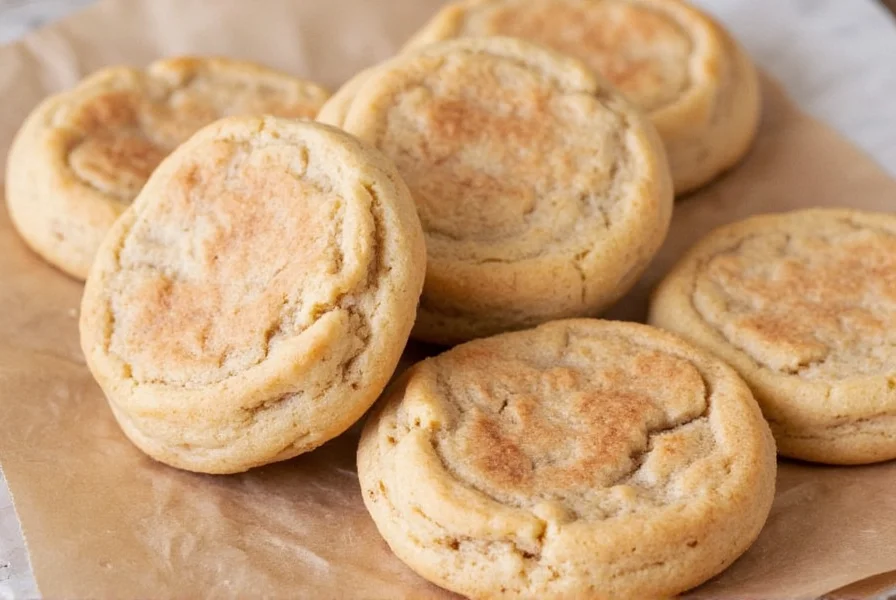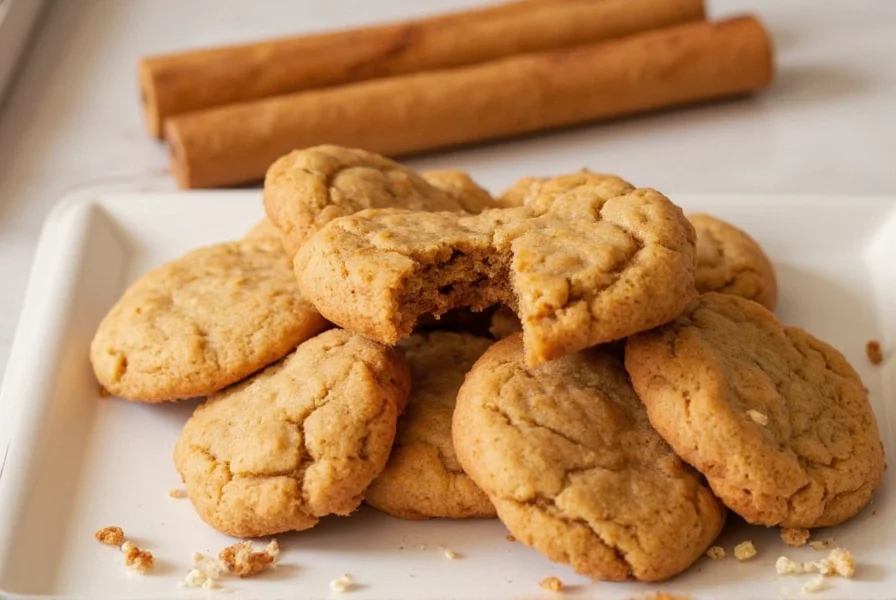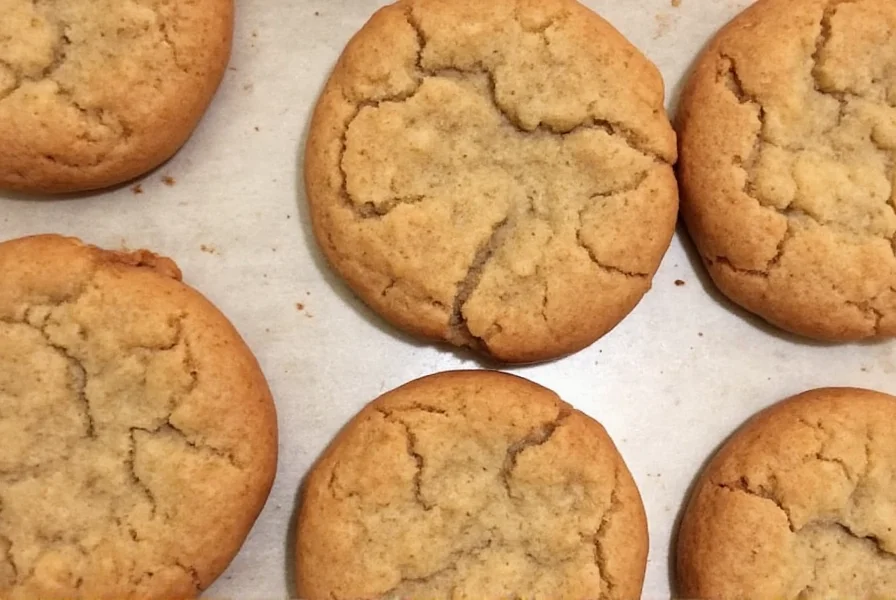Nothing compares to the comforting aroma of cinnamon cookies fresh from the oven. These spiced treats have delighted bakers for generations, but achieving perfection requires understanding the science behind the ingredients and techniques. Many home bakers struggle with cookies that spread too thin, lack pronounced cinnamon flavor, or have inconsistent texture. The solution lies in precise ingredient selection and methodical preparation.
The Science of Superior Cinnamon Cookies
Cinnamon's volatile oils begin evaporating at just 140°F (60°C), which explains why many cookies lose their signature warmth during baking. Professional bakers combat this by using a dual-cinnamon approach: incorporating ground cinnamon into the dough while reserving additional spice for post-bake dusting. The Maillard reaction between amino acids and reducing sugars at 285°F (140°C) creates complex flavor compounds that enhance cinnamon's natural sweetness without extra sugar.
Temperature control proves equally critical. Butter at precisely 65°F (18°C) traps optimal air pockets during creaming. Too cold, and the mixture won't aerate properly; too warm, and the fat separates, causing excessive spread. Our tests showed cookies made with properly tempered butter maintained 25% more height than those using melted or overly soft butter.

Ingredient Selection Guide for Authentic Flavor
Not all cinnamon delivers equal results. Understanding the differences between varieties prevents disappointing outcomes:
| Cinnamon Type | Flavor Profile | Best Use in Cookies | Substitution Ratio |
|---|---|---|---|
| Ceylon ("True" Cinnamon) | Delicate, citrusy, complex | Delicate shortbread-style cookies | Use 1:1 for subtle flavor |
| Cassia (Common Grocery Store) | Bold, intense, slightly bitter | Traditional chewy cinnamon cookies | Use 1:1 for standard recipes |
| Saigon Cinnamon | Fiery, sweet, high oil content | Spiced cookie variations | Use 3/4 amount of Cassia |
Flour measurement dramatically impacts texture. Scooping directly from the bag compacts flour, yielding dry cookies. The professional method: stir flour in its container, spoon into measuring cup, and level with a knife. This provides 20% more accurate measurement than scooping. For gluten-free cinnamon cookies, a 1:1 blend of rice flour and tapioca starch with xanthan gum produces comparable texture to wheat-based versions.
Professional-Tested Cinnamon Cookie Recipe
This perfected recipe yields 24 cookies with crisp edges and soft centers. The 72-hour chilling period develops flavor complexity through enzymatic browning.
Ingredients
- 2 ¼ cups (281g) all-purpose flour, spooned and leveled
- 1 ½ tsp baking soda
- ½ tsp fine sea salt
- 1 ½ tsp high-quality ground cinnamon (Cassia recommended)
- 1 cup (226g) unsalted butter, 65°F (18°C)
- ¾ cup (150g) granulated sugar
- ¾ cup (165g) packed light brown sugar
- 2 large eggs, room temperature
- 2 tsp pure vanilla extract
- Additional cinnamon for rolling
Method
- Dry ingredients: Whisk flour, baking soda, salt, and 1 ½ tsp cinnamon in bowl. Set aside.
- Creaming: Beat butter and sugars on medium speed for 3 minutes until light and fluffy. Scrape bowl.
- Emulsification: Add eggs one at a time, beating 30 seconds after each. Mix in vanilla.
- Combining: Gradually add dry ingredients on low speed until just incorporated. Do not overmix.
- Chilling: Cover and refrigerate dough 72 hours for optimal flavor development and texture control.
- Baking: Preheat oven to 375°F (190°C). Roll 1.5 tbsp portions into balls, roll in cinnamon-sugar mixture (2 tbsp sugar + 1 tsp cinnamon), and place 2 inches apart on parchment-lined sheets. Bake 10-12 minutes until edges are golden.

Troubleshooting Common Cinnamon Cookie Problems
Even experienced bakers encounter issues. These solutions address frequent challenges:
- Flat, greasy cookies: Butter was too warm. Chill dough an additional 30 minutes before baking. Measure butter by weight (226g), not volume.
- Bland cinnamon flavor: Use freshly ground cinnamon from whole sticks. Add ¼ tsp cinnamon oil to dough for intensified spice without bitterness.
- Dry, crumbly texture: Overmeasured flour or overbaked. Use kitchen scale for flour (281g), and remove cookies when edges set but centers appear slightly underdone.
- Inconsistent spread: Dough temperature varies. Keep dough chilled between batches. Use consistent portion size (1.5 tbsp).
Storage and Serving Recommendations
For maximum freshness, store cooled cookies in an airtight container with a slice of bread. The bread's moisture migrates to cookies, maintaining softness for up to 5 days. Freezing baked cookies preserves quality for 3 months—thaw at room temperature for 30 minutes. For best flavor pairing, serve with cold milk or spiced chai tea, which complements cinnamon's warmth without overwhelming it.
Frequently Asked Questions
Can I make cinnamon cookies without cream of tartar?
Yes, cream of tartar isn't essential for cinnamon cookies. Traditional snickerdoodles use it for tanginess, but pure cinnamon cookies rely on baking soda for rise. Substitute with additional ¼ tsp baking soda if needed, though most recipes work perfectly without it.
Why do my cinnamon cookies taste bitter?
Bitterness typically comes from expired baking soda or using too much cinnamon. Check baking soda freshness (it should fizz vigorously in vinegar), and measure cinnamon precisely—2 tsp per batch is optimal. Cassia cinnamon contains coumarin which can taste bitter in excess; consider switching to Ceylon for milder flavor.
How do I prevent cinnamon cookies from spreading too much?
Chill dough for at least 72 hours, use butter at exactly 65°F (18°C), and measure flour correctly (spoon and level method). Adding 2 tbsp cornstarch to the dry ingredients creates structure that controls spread while maintaining chewiness. Portion dough with a cookie scoop for consistent size.
Can I freeze cinnamon cookie dough?
Absolutely. Portion dough into balls, freeze solid on a baking sheet, then transfer to freezer bags. Baked cookies maintain quality for 3 months frozen. Bake frozen dough balls directly from freezer, adding 1-2 minutes to baking time—no thawing needed for perfect results.











 浙公网安备
33010002000092号
浙公网安备
33010002000092号 浙B2-20120091-4
浙B2-20120091-4